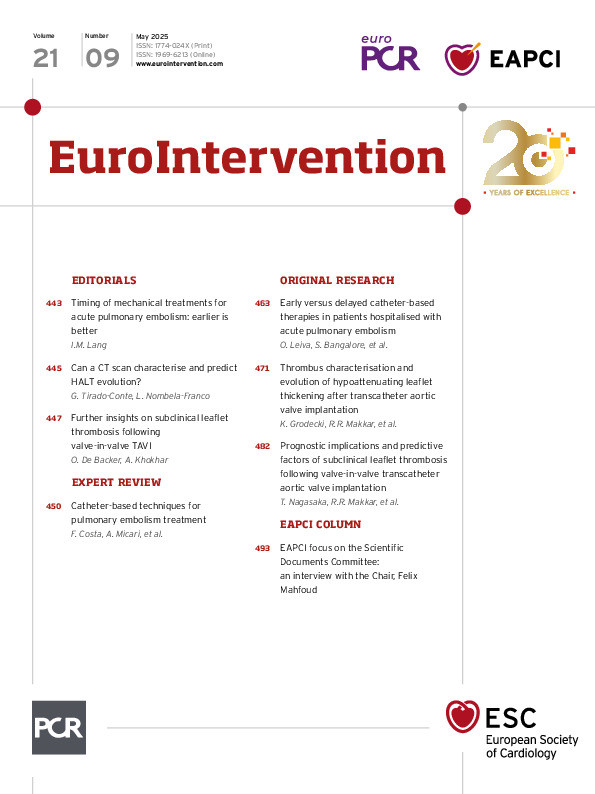Ten years ago, the first studies on subclinical leaflet thrombosis (SLT) following transcatheter aortic valve implantation (TAVI) were reported. It was detected as hypoattenuated leaflet thickening (HALT) with or without reduced leaflet mobility (hypoattenuation affecting mobility [HAM]) on post-TAVI cardiac computed tomography (CT) scans1. A decade and multiple studies later, SLT remains a clinical conundrum due to its high incidence, dynamic clinical course, uncertain prognostic impact and challenging treatment strategies.
Certain subsets of patients, such as those undergoing valve-in-valve (ViV) TAVI procedures, are at an elevated risk for developing SLT, which may lead to thromboembolic events and premature structural valve deterioration (SVD)2. This concern is accentuated by the expansion of TAVI and ViV TAVI towards younger patients with longer life expectancies.
In this issue of EuroIntervention, Nagasaka et al present a timely study evaluating SLT in 117 patients who underwent ViV TAVI with a balloon-expandable valve (BEV)3. Four-dimensional CT, performed 1 month post-implantation, was used to detect SLT and to evaluate the BEV stent frame geometry and its relationship with the surrounding aortic root. Haemodynamic and clinical outcomes were...
Sign up for free!
Join us for free and access thousands of articles from EuroIntervention, as well as presentations, videos, cases from PCRonline.com

